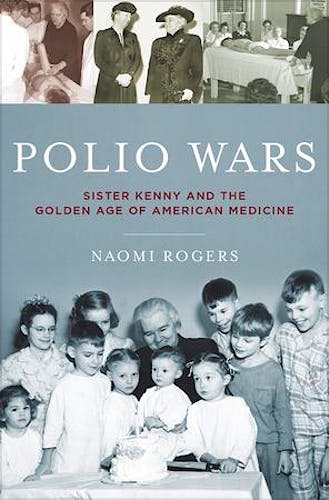

No hay productos en el carrito



Polio Wars. Sister Kenny and the Golden Age of American Medicine
Rogers, N.
1ª Edición Diciembre 2013
Inglés
Tapa dura
488 pags
844 gr
17 x 24 x 4 cm
ISBN 9780195380590
Editorial OXFORD USA
LIBRO IMPRESO
-5%
37,86 €35,97 €IVA incluido
36,40 €34,59 €IVA no incluido
Recíbelo en un plazo de
2 - 3 semanas
ABOUT THIS BOOK
- A historian's account of Sister Elizabeth Kenny, one of the first celebrities in American medicine
- Simultaneously a history of a disease, its public perception, its treatment, and ultimately its cure
- Fascinating cinematic story of both a rise to fame and one person's impact on public health
- Microcosmic history of an evolution in clinical care
During World War II, polio epidemics in the United States were viewed as the country's "other war at home": they could be neither predicted nor contained, and paralyzed patients faced disability in a world unfriendly to the disabled. These realities were exacerbated by the medical community's enforced orthodoxy in treating the disease, treatments that generally consisted of ineffective therapies.
Polio Wars is the story of Sister Elizabeth Kenny — "Sister" being a reference to her status as a senior nurse, not a religious designation — who arrived in the US from Australia in 1940 espousing an unorthodox approach to the treatment of polio. Kenny approached the disease as a non-neurological affliction, championing such novel therapies as hot packs and muscle exercises in place of splinting, surgery, and immobilization. Her care embodied a different style of clinical practice, one of optimistic, patient-centered treatments that gave hope to desperate patients and families.
The Kenny method, initially dismissed by the US medical establishment, gained overwhelming support over the ensuing decade, including the endorsement of the National Foundation for Infantile Paralysis (today's March of Dimes), America's largest disease philanthropy. By 1952, a Gallup Poll identified Sister Kenny as most admired woman in America, and she went on to serve as an expert witness at Congressional hearings on scientific research, a foundation director, and the subject of a Hollywood film. Kenny breached professional and social mores, crafting a public persona that blended Florence Nightingale and Marie Curie.
By the 1980s, following the discovery of the Salk and Sabin vaccines and the March of Dimes' withdrawal from polio research, most Americans had forgotten polio, its therapies, and Sister Kenny. In examining this historical arc and the public's process of forgetting, Naomi Rogers presents Kenny as someone worth remembering. Sister Kenny recalls both the passion and the practices of clinical care and explores them in their own terms.
Readership: Academics (history of medicine, US history, nursing history, disability history, gender history, film history); lay audiences, especially those interested in disease activism, medical ethics, connected with post-polio community, disability rights.
AUTHOR INFORMATION
Naomi Rogers, Associate Professor, History of Science and Medicine, Yale University
Naomi Rogers, PhD, is a tenured Associate Professor in the Program for the History of Science and Medicine at Yale University where she teaches medical students, undergraduates and graduate students.
TABLE OF CONTENTS
Introduction
Part One
1 A Bush Nurse in America
2 The Battle Begins
3 Changing Clinical Care
Part Two
4 Polio and Disability Politics
5 The Polio Wars
6 Celluloid
Part Three
7 Kenny Goes to Washington
8 Fading Glory
9 I Knew Sister Kenny
© 2025 Axón Librería S.L.
2.149.0